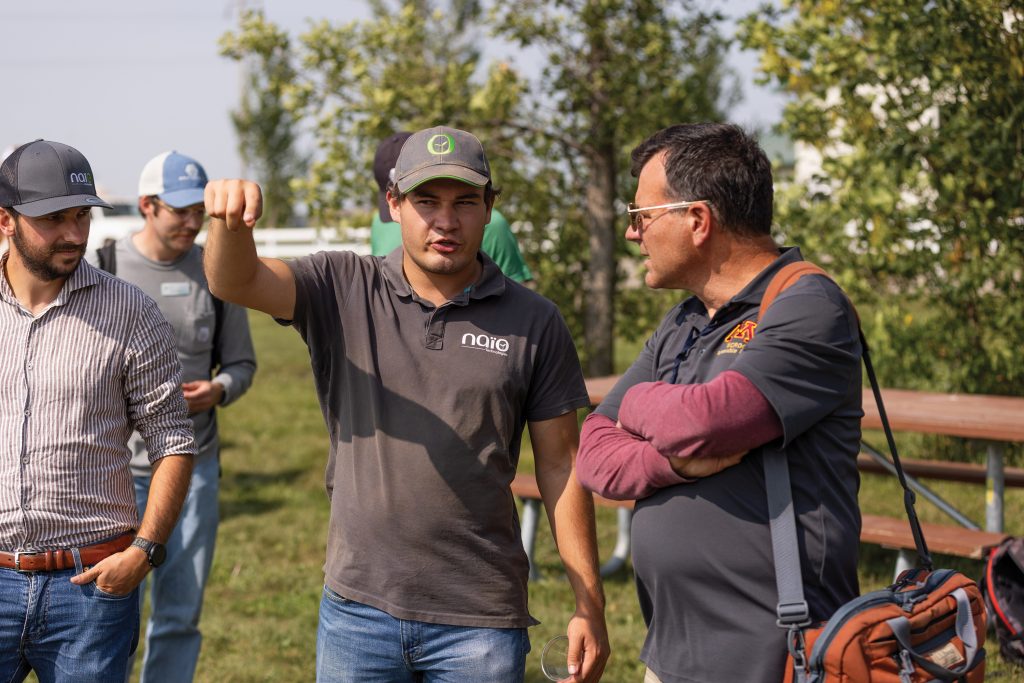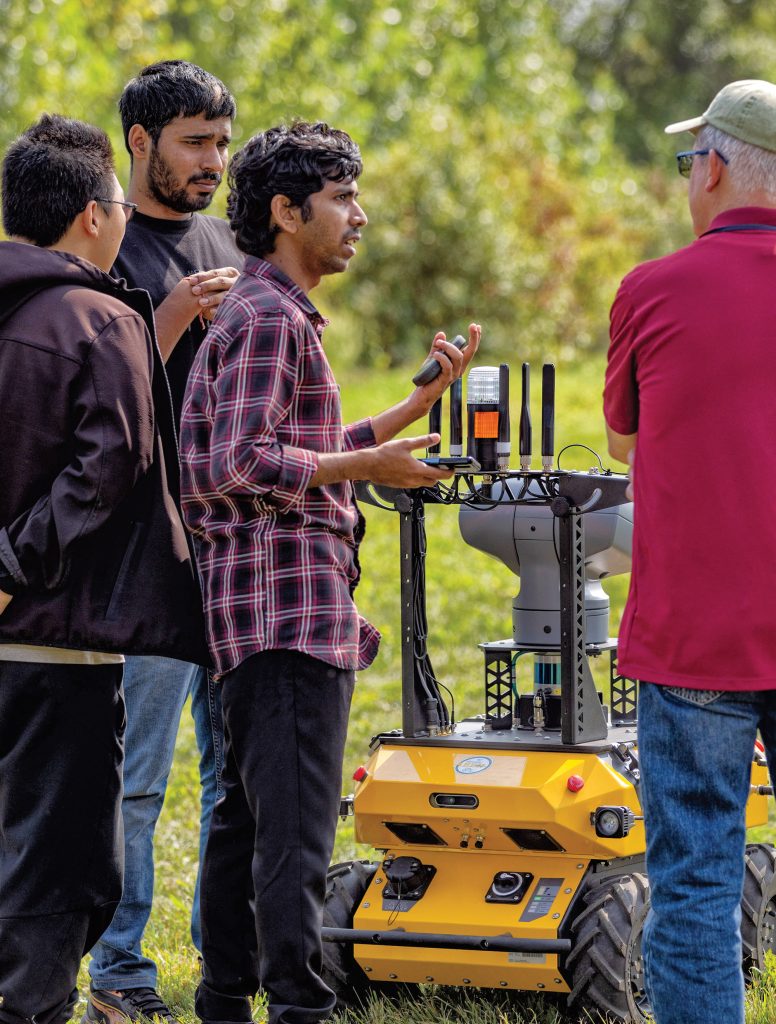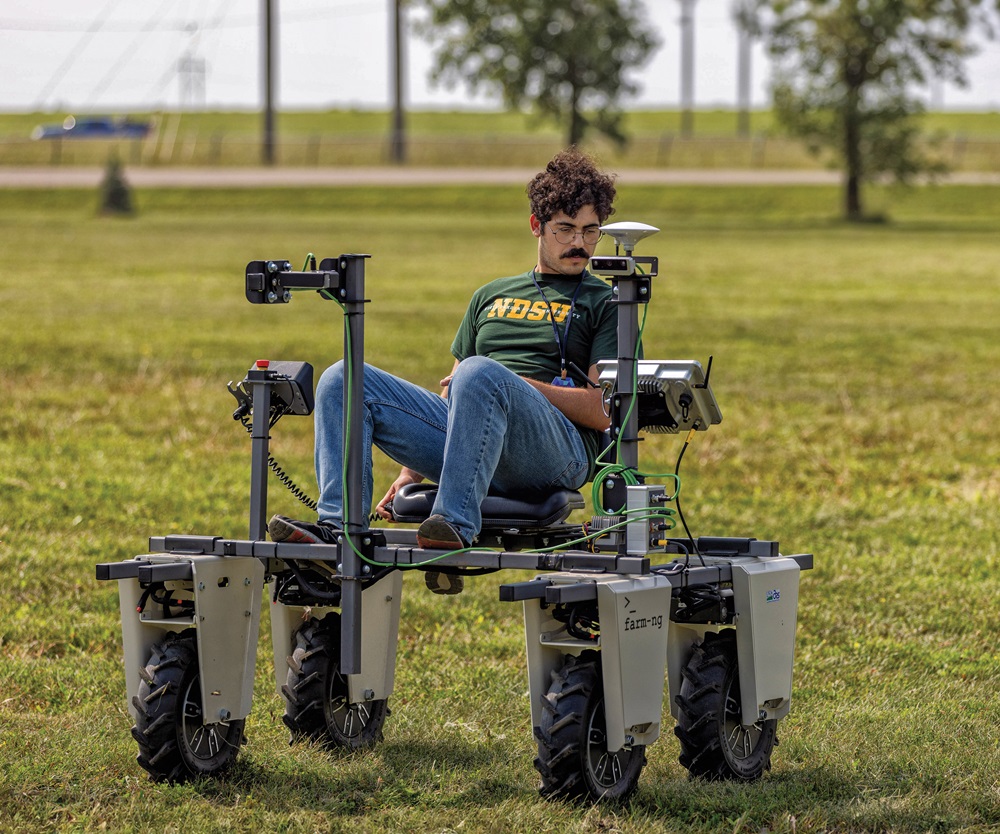During the past 100 years, a global revolution was waged and won. The Third Agricultural Revolution led to the increase in the global population by six billion people. Often, innovators are specifically mentioned in this feat; however, it was entire innovation communities that ultimately led to this accomplishment. This is not to belittle agricultural innovators, such as Nobel laureate Norman Borlaug, who dedicated his life to feeding the world—spending decades dedicated to innovating disease resistance and higher yield wheat varieties. Instead, the view that innovation communities worked together to solve the challenges and demands of food production sheds light on the bigger picture—how people from around the world collaborated, competed and collided to solve some of the largest challenges facing society at the time.
These innovation communities provided infrastructure, funding and knowledge-sharing platforms. They facilitated field trials, scaled up successful models and trained farmers in new techniques. They collaborated across international borders, sharing their findings and refining their methods. As a result of this monumental effort, countries and regions on the brink of famine had the tools to become self-sufficient in food production.
Innovation communities showed that when diverse, multidisciplinary groups come together with a central goal, the seemingly impossible can be achieved.
Fourth Agricultural Revolution
The Third Agricultural Revolution introduced advanced technologies, including high-yield crop varieties, chemical fertilizers and irrigation systems. This revolution significantly increased global food production, particularly in developing countries, and also raised concerns about environmental degradation and unequal access to resources.
Today, we stand at the beginning of the Fourth Agricultural Revolution. In agriculture, we are no longer fighting to prevent regional or global famine.


However, current and future challenges are more complex than in the past.
The Fourth Agricultural Revolution is and will continue to build on the immense work of its predecessor with new technologies, including robotics, biotechnology, sensors and artificial intelligence (AI).
AI will aid greatly with autonomous agriculture. Understandably, many people focus narrowly on autonomous tractors as the keystone invention in the future of agriculture. Driving a tractor is a very human activity, which many people, including myself, have done or see themselves doing when thinking about farming production.
However, AI’s far greater impact will occur in the rapid increase in both the quality and quantity of decisions that can be made and operated on in agriculture production. In the Third Agricultural Revolution, producers became very proficient at making quality decisions at the field level, such as how much nitrogen to apply or when to harvest. These critical decisions are made throughout the growing season or during the lifespan of livestock. Typically, one good decision is made per event, per field, for example, when and how much fertilizer to apply.
Now producers make many more such decisions as precision agriculture tools become available and are implemented. The Fourth Agricultural Revolution, especially regarding AI, is like giving someone glasses, which bestow immense resolution and clarity. Farmers can greatly increase the number of quality decisions they make on their fields. As decision-making resolution increases, farmers will produce more food, fuel and fiber with less resources.
This phenomenon will be experienced not only in row- crop agriculture but also throughout food production. Imagine having the information and tools to provide each cow with its own unique diet, customized to maximize both return on investment and quality of life. And this is just one decision, where perhaps hundreds or thousands of similar decisions can be made for that individual animal. All of this will transpire without needing to increase costs or effort.
These tools will enable farmers to go from one decision per field to 100 and then 1,000. Eventually, when the farmer is enabled to make one decision per plant, we will be in the middle of the Fourth Agricultural Revolution. Imagine, then, if every seed is planted into the ground with the perfect orientation, the perfect amount of water and the perfect amount of nutrients—repeated millions of times across an entire field.
That is just the beginning. Once the achievement of one decision per plant is reached, we will quickly go to ten, then 100, then 1,000 and so on, maximizing everything from yield to micronutrients to moisture.
Effects on Engagement with Food
Similar to how technology, such as AI, is rapidly changing the rest of society, the Fourth Agricultural Revolution will dramatically change the landscape of how people around the world engage with their food.
As the percentage of the population with no connection to agricultural production increased greatly, the disconnection between consumers and the food they eat has also grown, along with a disconnection with what it takes to produce the world’s food, feed, fuel and fiber (the 4 Fs of agriculture). The Fourth Agricultural Revolution will reconnect people with food quality, as well as food and clothing production, by providing increasing information about consumer choices.
This will bring about resource conservation and optimization; a greater emphasis on food quality, not just quantity; and increasing the connection between people and the food they eat.
These are just three examples of hundreds of benefits that the Fourth Agricultural Revolution will create. To achieve this will take a momentous effort similar to that seen in the last 100 years, requiring an interlock of innovation versus the siloed approach of the past.
Five Critical Technology Families
There are five critical families of technologies needed for this future to exist: connectivity infrastructure, data collection tools, data analysis tools, decision-making tools and finally equipment that can operate at the appropriate decision-making resolution.
Once these interconnected technologies reach the capability to operate at the level of one decision per plant, the decision-making resolution will be at the degree of millions and perhaps billions of decisions per field.

Innovation Communities
To achieve this, agricultural innovation communities, such as Grand Farm, are needed to bring the existing agriculture community together with innovators from around the world representing startups, corporations, researchers, government and investors. This convening will facilitate a global engine set on solving the problems of each unique agricultural region. Innovation communities are built on trust, relationships and resources, and they thrive on the exchange of ideas.
By bringing together the existing agriculture communities, such as in the Upper Midwest— representing unique soil conditions, cropping practices and regional cultures—with this global innovation engine, the Fourth Agricultural Revolution can be achieved more quickly. Agricultural communities worldwide will guide innovators to this future through exposure to challenges and opportunities—and knowledge about how these are currently tackled.
Agricultural communities are regional in nature. With different growing seasons, cropping rotations, soil types and cultures, these communities encounter problems requiring specific and perhaps unique solutions. In response, innovation communities will need to be guided by local farmers and ranchers who can inform them about their specific challenges and opportunities. This will help innovators best decide what innovations are worth pursuing.
Often regional challenges are also national, which can drive greater investment since the resulting innovations will serve a greater portion of the agriculture industry, which in turn would drive the need for an innovation to be developed sooner rather than later.
Intentional Actions to Accelerate Innovation
These innovation communities have self-organized in the past. We’ve seen passive innovation communities, such as Silicon Valley, emerge to rapidly grow specific segments of innovation. However, the passive innovation community model can be strengthened and accelerated by facilitating four intentional actions (the 4 Cs). By both guiding the innovation communities and intentional utilization of the 4 Cs, the need for interlocked innovation, as seen in the Fourth Agricultural Revolution, can be met:
Collision: When people from different backgrounds, disciplines and experiences collide, unexpected and powerful ideas emerge. Every interaction between two people is a collision, and the frequency and number of these lead to positive impacts across the innovation community. Informal interactions, such as hallway conversations or coffee breaks, can lead to moments of inspiration. These spontaneous discussions often result in the cross-pollination of ideas that formal meetings might not generate. For example, a chance conversation between a startup founder, who is developing AI-driven crop monitoring tools, and an executive from a major agriculture company at an industry conference sparked a partnership to pilot the technology on large-scale farms. (This and the other examples below occurred, but the names of the individuals and companies have been withheld).
Collaboration: By forming teams with members from different fields, innovation communities can tackle complex problems from multiple angles. Collaborators share goals, resources and risks. Regular interactions and feedback sessions help refine ideas quickly. For example, a university researcher specializing in sustainable farming practices teamed up with a leading agriculture company to co-develop fertilizers that enhance crop yields.
Competition: Competitors drive each other to excel and innovate. The presence of multiple players working on similar problems fosters a healthy competitive spirit, pushing everyone to improve and innovate continuously. For example, two agriculture equipment companies, both developing precision irrigation systems, spurred each other to innovate more efficient water-saving technologies, ultimately benefiting farmers with improved crop yields and reduced resource consumption.
Innovation communities showed that when diverse, multidisciplinary groups come together with a central goal, the seemingly impossible can be achieved.

Convening: Finally, the act of bringing together the innovation community, especially in neutral spaces multiplies the impact of the rest of these actions. Convening provides the presence, intentionality and energy to discuss and share big ideas and move innovation forward. The rhythm of these engagements builds both momentum and focus. For example, a regular set of roundtables was developed to bring together members of regional agriculture communities and the global innovation community to discuss the need for herbicide resistant technologies, resulting in the co-creation of a new innovation.
To accelerate the Fourth Agriculture Revolution, innovation communities must engage in collisions that spark new ideas, collaborate across disciplines to solve complex problems, compete to drive each other towards excellence and multiply impact by gathering regularly. More importantly, by combining these actions and bringing together both the regional agricultural communities with the innovation community, a new type of innovation community emerges: a guided innovation community. This is the approach Grand Farm takes in facilitating a global innovation community to solve the challenges and opportunities of regional agricultural ecosystems. The agricultural community guides and leads the innovation community into the future, saving both time and resources. This is stronger than the passive innovation communities like Silicon Valley because it provides a framework for “what’s next.” ◉
William Aderholdt, PhD.
William Aderholdt, PhD, is the Director of Grand Farm where he
leads the Grand Farm Research and Education Initiative, a network of
growers, startups, corporations, education, researchers and government
agencies working to solve problems in agriculture. Aderholdt joined
Grand Farm in 2019 as the initiative’s first hire. Previously, he worked
at Montana State University in Residence Life, as well as on Civil
Rights and Title IX investigations. Aderholdt earned his BS in Cell
Biology and Neuroscience, and his MA and PhD in Education, all at
Montana State University.

